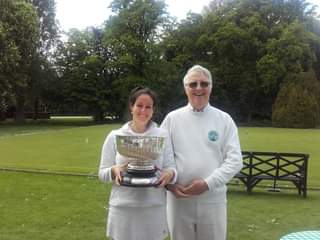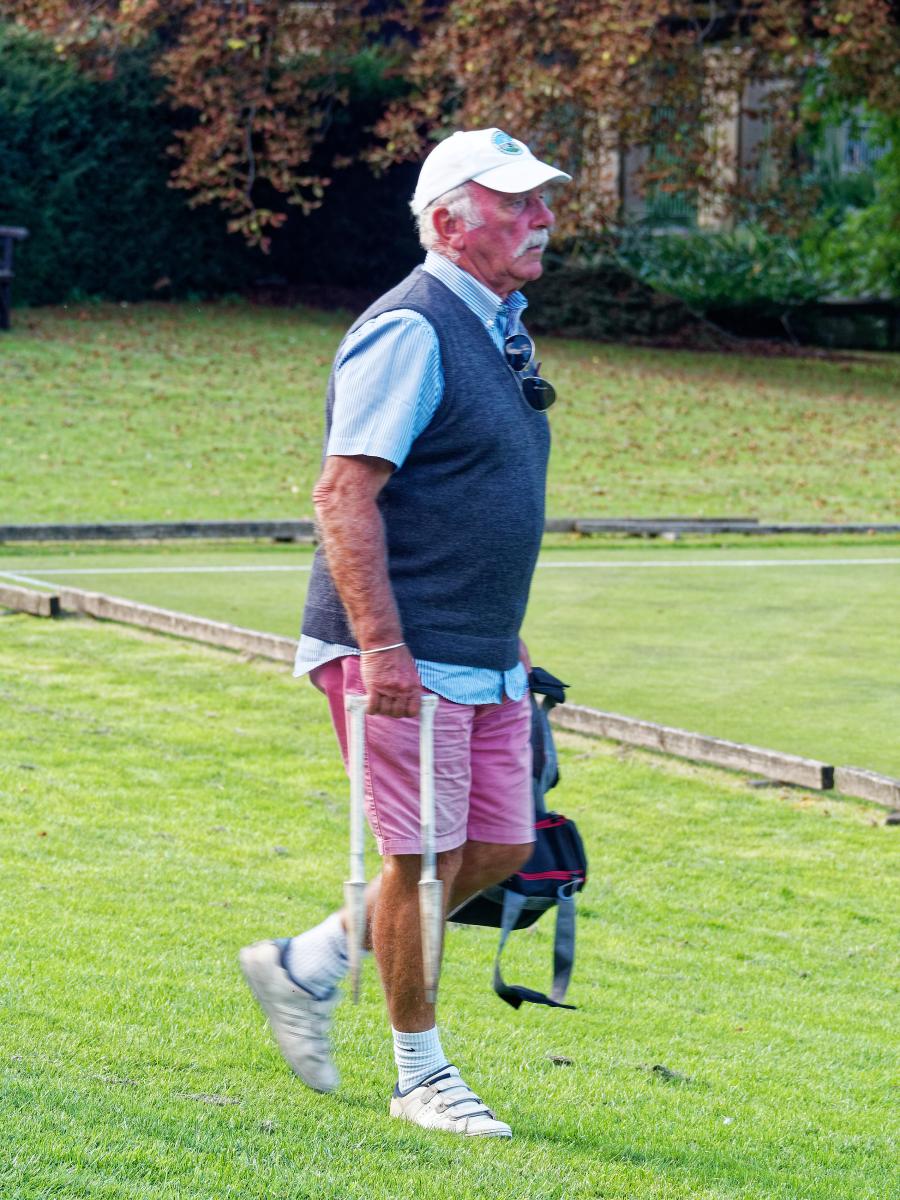At the Croquet Association's AGM on Saturday 17th October, Nottingham Croquet Club member and former Chairman and President, Peter Death was awarded the Bernard Neal Award for exceptional services to croquet.
The official citation is below.
The photo shows Peter presenting the Ladies' Singles trophy to a delighted Sophie McGlen.
Many congratulations to Peter, and many thanks for his huge contribution to our own club over so many years.

= = =
Peter Death discovered croquet in 1975 by stopping to watch play in the August tournament at Nottingham while walking round the lake as a student. He joined the club and rapidly developed into an A class player. Before his career with the then Inland Revenue took him away from Nottingham in 1981 he had already been recruited as club Treasurer from 1977. He encouraged his son James to play with a cut-down mallet on the triangle between lawns 1 and 2. He remained a member of Nottingham, but was also a member at Bowdon, Southport and Shrewsbury as his postings took him around the country. When Peter returned full-time to the Nottingham club in 1989 he held various offices including Chairman and President for some years.
During this time he developed a keen interest in tournament management, becoming one of the relatively few with the capacity to handle multi-event week long tournaments, showing abundant patience and consideration for the players in them. He has managed the Nottingham Week for many years, using an updated version of software originally developed for the purpose by Ian Vincent, and also major International Events, including a MacRobertson Shield Test Match, Womens AC World Championship, and was Tournament Director for the U21 GC World Championship.
Peter also quickly qualified as a referee, was appointed an examining referee in the 1980s and is a long-standing member of the AC Laws Committee.
He was elected to the CA Council in 2010 and chaired the Development Committee for four years. Peter Death succeeded Roger Bray as Hon. Treasurer of the CA in 2014 and saw Council through a time of significant change with the introduction of Standard Membership. Not only was he a reliable bookkeeper, but he helped develop software to import data from the membership database, tournament entry and shop systems into the accounting package, Sage. He was also a source of wise counsel both on strategic financial matters and a valued member of the Executive Committee. As ever, with the interests of the CA at heart, he decided to retire from office while still in a position to effect a good hand-over, making this an appropriate time to recognise his outstanding contribution to croquet and its governing body.



